In the past, we were taught that a customer lifecycle follows a clear, predictable pattern.
Today, each customer lifecycle is a journey fraught with many lefts, rights, ups, and downs. That fact should be viewed as an invitation to stand by your customer's side, engaging them with appropriate messaging that's personal and relevant to them at whatever point they are in their journey.
You need to take advantage of the opportunities presented by the different paths available to your customers. That means applying your knowledge of customer pathways to nudge, upsell, and reward at the right time.
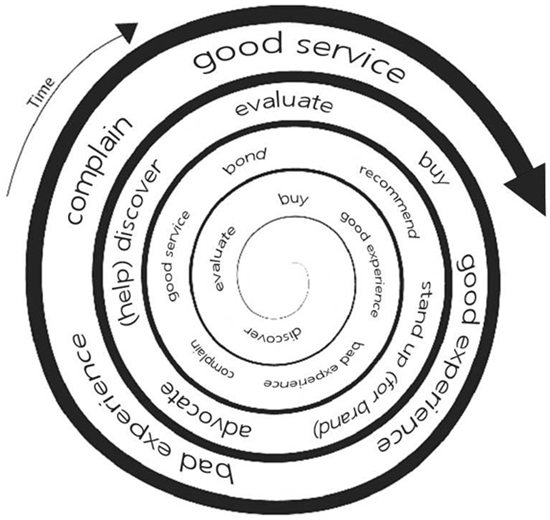
In short, you need to engage your customers before, during, and way after they encounter your brand, presenting them with tailored information specific to their needs that they'll come back to time and again.
That's why it's important to use customer communities to help guide them through their journey.
Consider this everyday situation:
Joey, a rookie photographer, is in the market for a good camera lens. He's never bought one before, and his first instinct is to turn to Google. So, when several search results pop up, including advertisements and company marketing materials, he filters those out because he wants more objective information. This customer is aware, connected, and informed. He's also weary of review sites that are biased toward certain brands. He may have questions related to a product, but he's looking for unbiased accounts from existing customers or third parties who express themselves openly. If you're looking to grow your business through word-of-mouth, these types of engaged customers are the ones you want to focus on acquiring.
Although today's customer journey may seem overly complicated, we can divide them into six manageable stages.
Stage 1: Discovery
This is the stage where customers learn about your brand; they realize they've got a need, and your product or service could fill it. At this stage, they may or may not be aware of your company and all that you can offer to them. Nevertheless, they've got a solution in mind that pushes them to find out more about you.
It's imperative that you grab that attention at this stage. They're looking for specific information in a well-presented, searchable format that will satisfy a wide variety of questions they may have.
Community goal: Your prospects have questions. They need answers—which, it so happens, can usually found among discussions by like-minded customers who have experience with your product. When these conversations take place within the confines of your website, you have control over when and how to present your prospects with the right information.
Example: Entrepreneurs looking to start a specific type of online store may have very few resources at their disposal. When visitors discover Shopify's community, they are greeted by a clean, clutter-free page that's easy for prospects to visit and engage with.
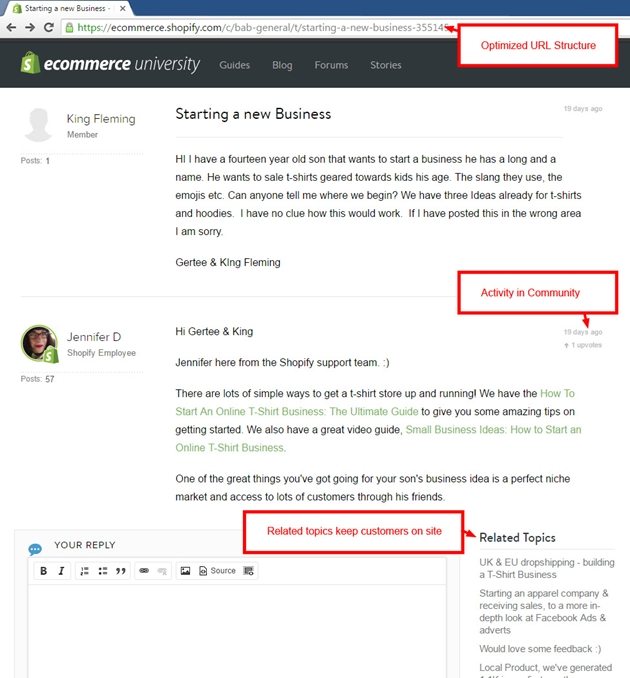
Stage 2: Evaluation
As your prospects discover and analyze various products, they weigh their options. Before the advent of social media, they might have asked friends and family for their opinion. Perhaps they'd visit a few physical stores, talk to employees ,or check out reviews in magazines to help them with their decision.
Today, instead, there are social media conversations, shareable review sites, and value-packed store communities. These are more effective in presenting immediate, up-to-date information—and can nudge the customer to take that next step in the journey.
Community goal: The evaluation process shouldn't be solely directed by the brand. Conversations nurtured by the participation of your staff, existing customers, and prospects, allow an environment in which objective and authentic advice is shared. The community acts as a source of information that helps prospects decide what's right for them—without coming across as imposing or salesy.
Example: People choose products based on their personal requirements. Think of everything from hair color, clothes, and car trim levels and options. When that type of information is presented in a trusted environment, as in the case of online image-editing tool Youzign (a client of ours at Helprace), it helps address questions prospective customers may be faced with.
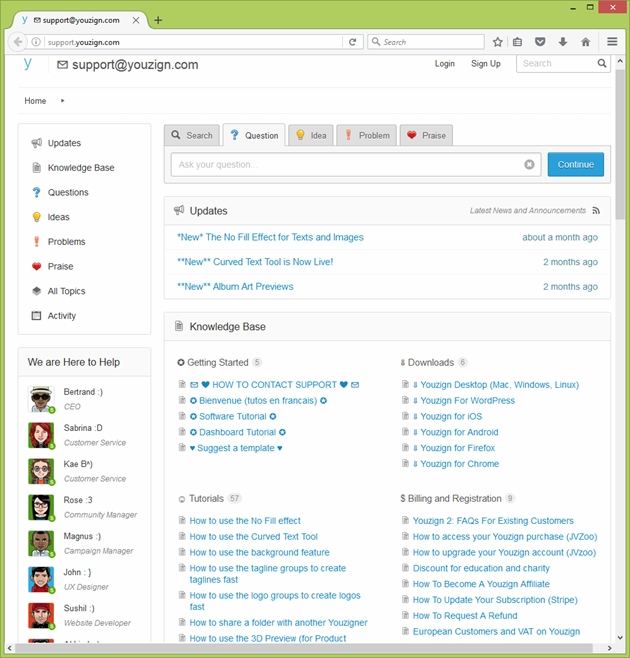
Stage 3: Purchase
The purchase stage is essentially when you're converting a prospective customer into an actual customer. Most people reach this stage when any doubt or obstacle they had about your product has been systematically eliminated.
However, you're not out of the woods just yet. For example, if customers are at the checkout page, about to make a purchase, but a question pops up in their mind, you don't want them to leave the page to look for the answer.
Community goal: The primary goal at this stage is to reduce cart abandonment and therefore lost sales. Reviews should be available on the same page (or in a new window) to minimize disruption in sales flow. Also, for easy participation in discussions, reviews should be readily available after the customer receives the item.
Example: noXuhair embeds customer conversations about the item via product pages. Some stores choose to add a link to the review page so that customers can read discussions in a new window—without cluttering the product page itself.
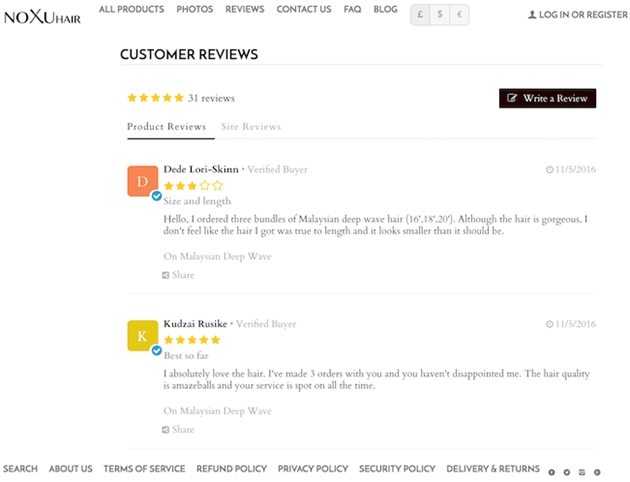
Stage 4: Experience
The next stage is difficult to manage for many e-commerce sites because its purpose is to re-establish and maintain your customers' loyalty. You want customers to continue receiving value from your brand. How well you treat them after their initial purchase will determine whether they become sporadic, regular, or loyal customers. One way to maintain the relationship is to continually offer exceptional value on your site.
Community goal: After the purchase, keep customers notified of discussions surrounding the product they just purchased. In addition, their engagement in your community can bring in more traffic. Staff members should encourage conversations that showcase your product's intended use by answering questions, validating the ideas expressed, and resolving concerns.
Example: When customers participate in the Mystore community (another Helprace client), they're automatically subscribed to discussions they support (vote for) and comment in. There's also the ability to share conversations, which helps gain social proof—using the experience of others to influence your prospects.
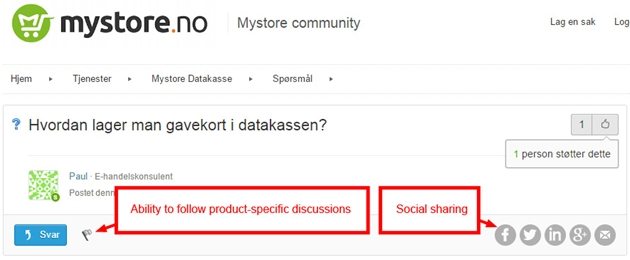
Stage 5: Bonding
The subsequent bonding period may take a long time or no time at all. This stage is all about ensuring customer success and trust. These customers typically leave positive Net Promoter Score ratings, and you as a vendor want to keep it that way.
No matter how good your product or service really is, customers will always require support. And the way you handle their situations can make or break your brand. Bonding and warming up takes time—it's a continuation of user experiences from the previous stage.
Community goal: Now, it's all about getting the customer to that stage where he's comfortable recommending your product to others in their network. If the customer is failing to bond, you may want to go back through the journey to see where you failed to deliver on your promises.
Example: A customer who has established rapport with your brand will want to maintain it. That's why over one-third of topics in the AMZ Tracker community are started by customers in the "bonding" stage. They come to the community because they're invested in sharing tips or getting questions answered. Some come to openly praise the company's work.
![]()
Stage 6: Advocate
Vocal happy customers have one thing in common: They got as far as they did either through luck or the vendor's particularly good customer service. Their customer journey so far has been pleasant, and everything leading up to this stage (discovery, evaluation, purchase, experience, bonding) has run smoothly.
To find these advocates, start with your team members. Talk to product managers, sales teams, marketing and IT departments... to see whether they can recommend notable, passionate customers buried in their email databases.
Since customers tend to complain in public and praise in private, it may make sense to fish out positive word-of-mouth from social networks. If you don't have enough advocates, it's important to go back to the previous stage to find out what caused them to lose interest.
* * *
Imagine, these days, setting out on a trip without a GPS. Businesses should understand customers are navigating uncharted territory and can get stressed and disoriented, and they can lose track of their goal. It's your job to help customers reach their—and your—desired objective.
Companies that are particularly well-informed about their customer journeys tend to have a companywide engagement strategy.
One of the most effective way to do so is to bring likeminded people together who are eager to provide as well as consume information. Such online communities allow you to capitalize on the value of your most engaged customers.
The longer your customers stay with you, the more they benefit and the more successful you become.




